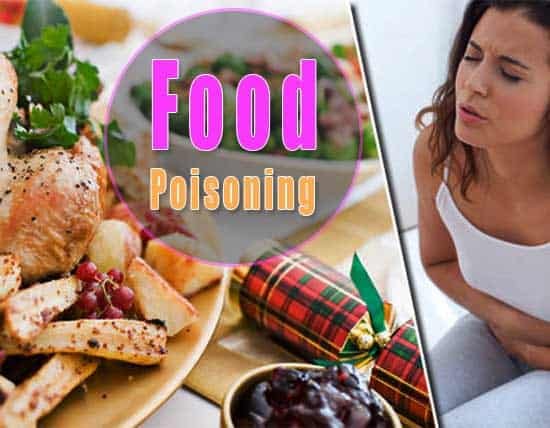
Use hand sanitizer as a substitute for washing your hands if soap and water aren’t available. Wash your hands, cooking tools and surfaces thoroughly before, during and after preparing food and before eating.Invisible to the naked eye, harmful germs that make you sick can spread from your hands to your countertops and land on your food. You can prevent food poisoning in four easy steps-clean, separate, cook and chill.
#FOOD POISONING WITHIN AN HOUR HOW TO#
How to prevent food poisoningįood poisoning is common and highly preventable.

When the sun beats down, lower your chances of food poisoning by keeping your food at 40° F or below. Warmer weatherīacteria thrive in the summer months because bacteria grow quicker in warm weather. Wash your hands and sanitize frequently touched surfaces such as door handles. Avoidance is your best defense against cross-contamination. Cross-contaminationĬross-contamination happens when harmful bacteria transfer from one surface to another. coli symptoms include severe stomach cramps, diarrhea and vomiting. Symptoms start three to four days after exposure and usually last five to 10 days. coli is also responsible for most urinary tract infections and occasionally causes blood in the urine.

coli include undercooked meat, unsanitary food handling, person-to-person contact and not washing your hands after touching an animal. This type of food poisoning happens when you eat or drink food or water contaminated by E. Fortunately, you only need to worry about the strains outside of your body.

Your provider may recommend antibiotics for listeriosis treatment. Older adults get headaches, neck stiffness, confusion, a fever and muscle aches. Pregnant women usually experience flu-like symptoms. Listeria symptoms start one to four weeks after exposure and last one to three days. Listeriosis mostly affects pregnant women, newborns, people 65 and older and those with a weakened immune system. Listeria can survive in refrigerated temperatures and hide in foods, most commonly dairy products and produce. The foodborne illness is caused by a germ called listeria. Symptoms of clostridium perfringens include diarrhea and stomach cramps, and last less than 24 hours. Clostridium perfringensĬlostridium perfringenslounge in meat and poultry, often causing food poisoning when food is unrefrigerated for too long. See your health care provider if you have salmonella symptoms when you get back home. Some types of salmonella, such as traveler’s diarrhea, are more common during international travel. Antibiotics make it harder to ward off salmonella because they kill off the “good” bacteria in your stomach and intestines. Another risk factor for salmonella is recent or long-term antibiotic use. You may be more at risk of salmonella poisoning if you take antacids, have inflammatory bowel disease or have pets. Salmonella typically lasts for four to seven days. Symptoms include diarrhea, fever, stomach cramps and vomiting. Salmonella poisoning symptoms start six hours to six days after exposure. Salmonella is more common in the summer than in winter because its harmful bacteria that cause food poisoning survive better in warmer weather. Salmonella poisoning is a common type of food poisoning that clings to undercooked poultry and raw eggs. Schedule a rotavirus vaccine and other childhood vaccines today. Unvaccinated children in daycare programs are at higher risk of getting rotavirus. Some medications can ease the symptoms, but antibiotics and antiviral drugs aren’t effective against rotavirus.Ĭonsider getting your kids vaccinated against rotavirus to prevent severe disease. Rotavirus symptoms usually start two days after exposure to the virus and last three to eight days. Rotavirus is most common in infants and younger children. Rotavirus is a highly contagious virus that causes vomiting, a fever, diarrhea, stomach pain, inflammation and other intestinal symptoms. The most common norovirus symptoms are diarrhea, vomiting, nausea and stomach pain. Norovirus symptoms start within 12 to 48 hours and usually last one to three days. Norovirus is more common in places with close living quarters or shared water source like cruise ships or dormitories. Norovirus is also caused by consuming contaminated food or water or touching your face after your hands contact a contaminated surface. Norovirus is a highly contagious virus caused by interacting with someone with the virus. Norovirus is the most common cause of foodborne illness. Some of the most common types of food poisoning include: Norovirus There are more than 250 types of foodborne illnesses. Keep reading to learn about six types of food poisoning and how to prevent them.

Fortunately, food poisoning is highly preventable. The symptoms can be brutal and start at the worst possible time. Food poisoning is a common foodborne illness caused by contaminated food.


 0 kommentar(er)
0 kommentar(er)
